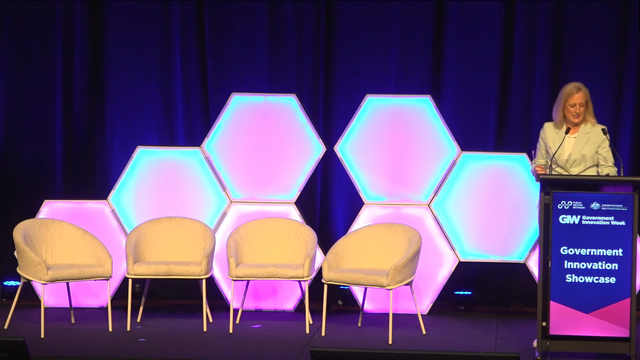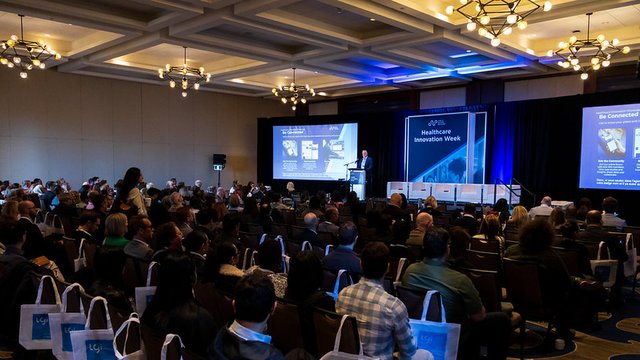Spotlight on our Keynote Session with Clinton Lawrence-Whyte, Director General, Procurement Assistance Canada at Public Services and Procurement Canada
Creating opportunities for diversity within procurement
A large federal government, like the Government of Canada, is involved in a vast array of activities and processes, many of which affect and impact the lives of its citizens. Some of these services affect citizens in direct and obvious ways, whilst others are more indirect and less known. One of these indirect services – which is no less important – is the field of procurement. It may not seemingly impact the lives of citizens on a daily basis, but Clinton Lawrence-Whyte, the Director General of Procurement Assistance Canada within Public Services and Procurement Canada (PSPC), says that procurement is one of the levers of government that affects “economic policy to drive economic growth.” More importantly, procurement is critically involved in “our commitment to advancing diversity and inclusion.” At first glance, procurement may not seem connected to diversity and inclusion. However, that is not necessarily the case.
“The Government of Canada sees and appreciates the lack of diversity representation in small businesses, and recognizes the opportunity to leverage the substantial use of federal procurement spending as a mechanism for providing economic benefits and growth for smaller and diverse businesses across Canada.” - Clinton Lawrence-Whyte, Director General, Procurement Assistance Canada, Public Services and Procurement Canada
This spending amounts to “approximately $22 billion annually,” and the diverse representation includes “businesses owned or led by deserving groups such as women, indigenous peoples, black and racialized Canadians, persons with disabilities, LGBTQ people and Canadians participating in federal procurement opportunities.” Supplier diversity and robust diversity in other forms of procurement leads to “economic growth and opportunities for businesses to grow by accessing new supply chains in the private and public sectors.” Moreover, diversity can lead to “greater employment or social benefits, and increased competition and innovation.”
Recognizing these opportunities, PSPC recently launched a ‘social procurement policy’, which is “going to enable the inclusion of socioeconomic objectives in the department’s procurements.” Considering that the PSPC works across all levels of government and assists other departments with their procurement too, this is likely to have widespread benefits. PSPC also has a ‘diversity action plan’, designed to “increase the participation of businesses from equity deserving groups.”
Helping Canadians with their procurement
A lot of the government’s focus in terms of diversity is on small to medium enterprises (SMEs), and the agency tasked with looking after them is Procurement Assistance Canada (PAC) which sits within PSPC. Its mandate is “to enable the participation of SMEs in federal procurement, and to increase supplier diversity among disadvantaged or equity deserving businesses.” This means that their focus is on increasing diversity and “economically empowering historically disadvantaged businesses,” with a long-term goal of creating “a more inclusive economy.”
To do this, PAC needs to first ensure that SMEs understand what procurement is and how it works, and then ensure that they understand how diversity within procurement may affect them. “Our offices therefore provide seminars, workshops, tailored one-on-one sessions, and a national info line for email and telephone inquiries.” Many SMEs don’t know about the opportunities that are available to them through the federal government, be it in the area or procurement or in other fields. “We view ourselves as a critical connecting element for these businesses and their communities.” As part of that, the PAC has created what they call the ‘Bidding Journey’, which “tailors its awareness, education and assistance services to firms based on their individual progress within the bidding journey.” The tailoring is important because every business, irrespective of size, “is varied in their diversity and experience. Some have extensive experience with the federal government, whilst others are new to this arena.”
The bidding journey has multiple stages, and businesses can participate in all of them or opt out as they please. The stages are:
- Awareness stage – “Where businesses start to see the government as a potential market opportunity for their goods and services.” For some, this is “when the lightbulb goes off and they think that maybe they should be looking to the federal government.”
- Research stage – “This is when businesses actively research and gather information that will help them decide if the government is a good fit for their business.” If they are interested, this is when “they will learn about contracting tools, methods of supply processes and procurement needs.”
- Planning stage – “This is when the business assesses their readiness to sell to the government and initiates the initial steps to become a supplier.”
- Opportunity stage – “This crucial step is when businesses actively talk about searching for opportunities. This includes learning about the tender search process and the tools to monitor and follow up opportunities.”
- Bidding stage – “This is when a business is looking at an opportunity and finds a procurement that they want to bid on. This is also when they prepare a bid for submission, which will either abandoned at some point or actually submitted.”
- Post-bid stage – “This is when they find out if their bid was successful. If successful then they will be expected to deliver on the terms of the contract, and if unsuccessful, businesses may choose to challenge a decision or request a debrief session.”
All of this is about “understanding the expectations at every step of the way.” From the perspective of government, it is “about providing the right services and supports to meet their needs and understand where we can best be helpful.”
The PSPC received an increased budget in 2021 and this has “enabled us to accelerate our efforts in areas such as increasing the capacity of our current services and supports for smaller and diverse businesses.” It also means expanding “our outreach and engagement to proactively build and maintain relationship with historically underrepresented communities that may not necessarily know about the services of PAC or PSPC.” For instance, this will allow the government to concentrate more on the actions within the Supplier Diversity Action Plan “to be supportive of the government’s commitment to increasing supplier diversity.”
On top of that, there is “a complimentary role” to look at emerging businesses and to “introduce new services and tools that are tailored to meeting the needs of equity deserving businesses and those new and emerging opportunities.” Diversity and inclusion remain critical in driving economic growth, and PAC “remains committed to exploring further opportunities to support smaller and diverse businesses in addressing the need for new procurement support services.”
Featured speaker: Clinton Lawrence-Whyte, Director General, Procurement Assistance Canada, Public Services and Procurement Canada




































